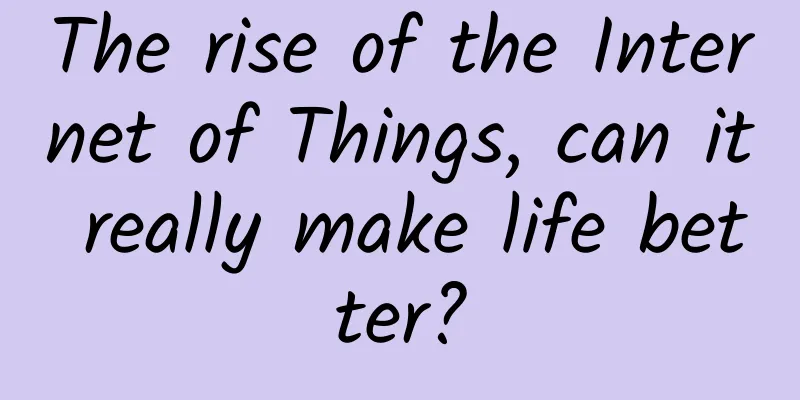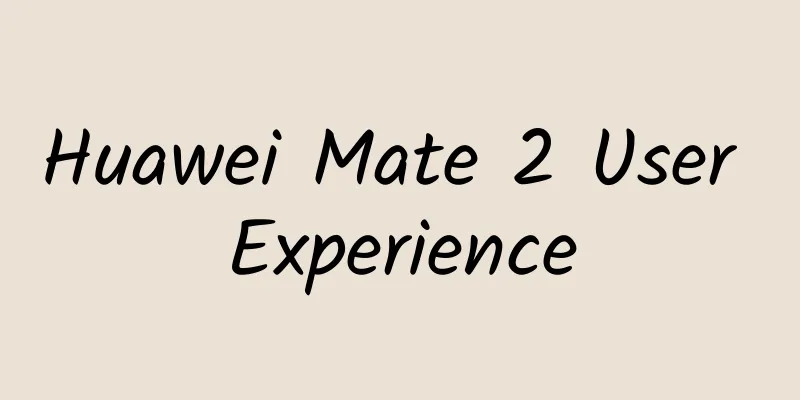The rise of the Internet of Things, can it really make life better?

|
According to foreign media reports on June 14, the Internet of Things technology seems to be unstoppable. It can help us order goods, analyze data and even build smart cities. Industry insiders promise that the Internet of Things technology can benefit everyone, but is it really the case? In San Francisco, a young engineer hopes to "optimize" his life using sensors that track heart rate, breathing and sleep cycles. In Copenhagen, Denmark, a moving bus transmits its position and number of passengers to the municipal traffic information network every two minutes, effectively planning the signal time at the three intersections ahead, allowing drivers to pass smoothly. In Davao, Philippines, a rotatable webcam overlooks the warehouse of a fast food restaurant, monitoring everyone entering and leaving. This is what we call the "Internet of Things" - all those disparate devices linked together through a network. Technologist Mike Kuniavsky, who pioneered the idea, describes it as "embedded computing devices and data communications distributed throughout the environment." I prefer its original meaning: the colonization (integration and control) of daily life through information processing. Although the word "colonization" may seem a bit aggressive, with the advent of the Internet of Things, all sorts of human ambitions will indeed be satisfied. The Internet of Things is not a single technology. The connection of various devices, services, suppliers and everything involved has the same ultimate goal: to collect data that can then be used to measure and control the world around us. When a project has such a high design impact on our daily lives, it is crucial to understand what its main ideas are and what benefits it pursues. Although there are no rules for the Internet of Things and no way to measure its quality, we can gain more specific meaning by observing it at three scales: our bodies ("quantified self"), our homes ("smart homes"), and our public spaces ("smart cities"). Each scale shows the impact that the Internet of Things brings to us, and each level has different things to guide us. At a personal level, the IoT exists in the form of wearable biometric sensors. The simplest of these is a connected digital pedometer, which measures the distance a person has walked by counting steps and provides an estimate of the energy expended during activity. More sophisticated devices are able to measure heart rate, respiration, skin temperature and even sweat production. In theory, if wearable biometric devices such as Fitbit and Apple Watch are about catering to the self-discipline of users, then the goal of colonizing the home environment with similar connected products and services is to provide a very different experience: convenience. The goal of this "smart home" effort is to shorten the process between the emergence of desire and the satisfaction of desire through devices. A perfect example of this is a gadget sold by Amazon, a one-click purchasing tool called the Dash Button. Many IoT devices are just traditional devices with internet connectivity. The Dash Button is the exact opposite and couldn’t exist without the internet. Amazon’s own description of the device and how it works couldn’t be better, so I’ll repeat it here: “The Amazon Dash Button is a Wi-Fi-connected device that allows you to reorder your favorite items with the press of a button. To use the Dash Button, simply download the Amazon app from the Apple App Store or Google Play Store. Then, log into your Amazon Prime account, connect the Dash Button to Wi-Fi, and select the items you want to reorder. Once connected, you can automatically place your order with a single press of the Dash Button.” In other words, it's a single-use electronic device, each designed to be used for a single, specific product. You push a button when you need it again. This device can be used for your pet food, laundry detergent, or bottled water, automatically placing an order. I don’t mean to downplay the value of a product like this to users. There is value to users who need to take care of an aging parent, to users who need to take care of an infant, or even to users who spend more than an hour buying a box of cat food. But the benefit to each user from the product is small compared to the benefit to Amazon. Sure, you’ll never run out of cat food because of this gadget. But at the same time, Amazon gets valuable data about when, where, how often, and how intensely users want things. This is an asset that Amazon will use in all kinds of ways, including using this data to develop behavioral models that map our desires to greater efficiency. Furthermore, devices such as the Dash Button allow users to complete transactions with minimal thought, and no longer need to tap the touch screen of a phone or tablet to place an order. This is the precise data that the industry calls "conversion" because it is relentless: every checkbox checked, every input field filled, all points to the final percentage of users' transactions. And the fewer steps in the transaction, the more likely people are to spend. Product manufacturers are constantly trying to eliminate these steps, hoping that one of their IoT products will become as integral to daily life as the smartphone. The recent industry-wide move toward the “smart home” is just one aspect of this. Currently, this strategy is focused on so-called "smart speakers," and the first generation has already hit the market, with the Amazon Echo and Google Home, each of which is capable of becoming the centerpiece of an entire smart home. The Amazon Echo is a simple cylindrical speaker, while the Google Home is an inverted oval. But in fact, it doesn't matter what the smart speaker looks like, because its main function is to be a physical "virtual assistant" that provides users with a convenient and integrated way to access the many digital controls scattered around the home - from lighting and entertainment to security, heating, cooling and ventilation system equipment, and so on. Google, Microsoft, Amazon and Apple all have their own virtual assistants based on natural language speech recognition technology. Most virtual assistants have female names, voices and personalities because relevant research shows that users of all genders prefer to interact with women. At first glance, such devices seem harmless. They just sit quietly on the edge of our awareness, and people only interact with them when they need to. However, when we think about it carefully, we find many problems. Think about how Google’s virtual assistant works: you mention your interest in Italian food, and, according to a New York Times article, “Google’s virtual assistant recommends some Italian restaurant reservation apps, such as OpenTable.” This example shows that while the recommendations these virtual assistants provide us are ostensibly neutral, they are based on a number of built-in assumptions that many of us would question whether we need to scrutinize. Ask restaurant owners and front-of-house staff what they think of OpenTable, for example, and you’ll quickly learn that the user convenience comes at the expense of added work, and OpenTable has all the relevant data. You’ll also learn that during busy times, OpenTable intentionally cuts the number of reservations per walk-in diner. So instead of using OpenTable to make reservations, sensible diners would call the restaurant to schedule a reservation. Google Home, by contrast, uses that service by default. This is not an accident. It reflects Google Home's design priorities, pre-set environments, and product philosophy. For the entire smart home industry, it is mainly composed of a homogeneous group of young designers and engineers. More important than their homogeneity to each other is their differences from others. Most IoT devices are designed by people who are used to services like Uber, Airbnb and Apple Pay. For these people, these services have already entered their lives and they take them for granted. But statistics from the Pew Research Center in Washington, DC show that a considerable number of people have never heard of or used such services, but over time, they will become commonplace for everyone. This way of interacting with networked information also brings other problems and challenges. For example, it is difficult for users to determine whether the recommendations of virtual assistants are the results of objective search or paid advertisements of merchants. However, the main problem of virtual assistants is that they provide a meaningless approach to the world, making users unwilling to long-term frustrated desires less important to the process leading to satisfaction. Virtual assistants can listen to the voices in the environment and be on standby in real time. As a voice interface for interacting with users, they listen to the voices in the home to detect when the environment produces a "keyword" to wake up the device. In this way, these devices can collect more data that can be used for advertising or other commercial purposes. Because virtual assistants do not understand the environment we are in and simply rely on keyword judgment, various funny situations have occurred. The National Public Radio Network once broadcast a report about Amazon Echo, and the various clues in the broadcast were understood by Echo as user commands, resulting in various confusions. Users get some conveniences from virtual assistants, while their service providers get everything - all the valuable data about your life. Let's think briefly about what we lose on the basis of the convenience brought to us by the Internet of Things. Are the limitations brought to us by the non-connected world really unmanageable? Is it really difficult to wait for the oven to preheat after returning home? Is it worth giving up a lot for remote control? By now, most of us know that our phones are constantly collecting information about our location and activities. However, we often overlook the fact that every block is also collecting information in real time, often dubbed as a "smart city." If wearable devices are about user self-mastery and understanding, and the purpose of smart homes is convenience, then the ultimate goal of smart cities is control, through real-time control to more effectively use space, energy and other resources. A variety of networked information-gathering devices are being deployed in public places, including CCTV cameras, advertising screens and vending machines equipped with biometric sensors, as well as indoor micro-positioning systems called beacons, which, when combined with smartphone apps, send users information about nearby products and services. In urban space, countless information is generated every moment. Our past leaves traces of information. Every square meter of seemingly peaceful space generates all kinds of user data, and no one knows how to use this information. At the city level, the guiding ideology of the Internet of Things is the top priority. The most stark and accurate statement is provided by Siemens Engineering in its definition of a smart city: “A few decades from now, cities will have countless autonomous, intelligent information systems, with perfect data on user habits and energy consumption, and will be able to provide the best services… The goal of such a city is to optimize the regulation of urban resources through autonomous information systems.” There is a philosophical position that holds that in principle the world is completely knowable, that the things it contains are countable and readable, and that the relationships between them can be fully encoded by technical systems without any deviation. When this idea is applied to urban affairs, it actually means that there is a single correct solution for each problem, which can be achieved through the right input technical systems and without any distortion on the basis of public policy. Virtually every aspect of this idea is questionable. Most obviously, it is not true that anything is completely knowable. Even if sensors could be deployed everywhere in a city, they would only capture what can be observed. In other words, they would not capture all the information needed to make sound policies. Furthermore, the inherent biases of humans inevitably color the information and data collected. For example, people will unconsciously generate data that favors their perceptions. Under pressure, a police officer tasked with “setting quotas” may focus on violations she would normally ignore, while, conversely, her commander, under pressure to make the city safer, may classify felonies of physical assault as simple misdemeanors. This phenomenon is particularly evident in situations where money or other incentives depend on meeting performance thresholds. There is also the problem of interpretation. Advocates of smart cities seem to believe that every human action has a single salient meaning that can be remotely identified and responded to by automated systems without any possibility of error. The most extreme advocates of this approach seem to believe that any data collected from the real world can be uniformly interpreted. But data is never completely “unbiased” and can be skewed by how it’s collected. A few meters’ change in the height at which a sensor is mounted can produce different readings for air pollution. Slightly changing the classification of a crime can change a community’s perception of risk. And anyone who’s worked on polling knows how sensitive the results are to the wording of a survey. All known information processing systems, current levels of human cognition, and current organizations are at odds with this so-called “perfection.” In fact, no matter how powerful a computing system is, no experienced engineer would ever describe it as perfect. Moreover, the idea of a one-size-fits-all solution to a wide variety of urban problems is confusing: a city is often made up of individuals and communities with a wide range of preferences, and it is impossible to fully satisfy everyone at the same time. If there is such a solution that can be implemented algorithmically, it is completely unbelievable. Assuming there is such an algorithm that balances everything and can automatically allocate various resources, it would certainly be very convenient. However, leaving municipal management decisions to algorithms seems to be too trusting of the people who wrote the algorithms. Quite simply, we need to understand that developing an algorithm designed to guide the allocation of citizen resources is itself a political act. Policy recommendations derived from computational models are also difficult to apply to sensitive issues such as resource allocation. Some of the results may be manipulated by humans, overwritten by weighted decision factors, or simply ignored. In fact, the perfect capabilities implied in most smart city rhetoric are completely incompatible with the technological systems we know. They are not built on the basis of how cities operate. So, although the Internet of Things offers many new possibilities, no matter how much convenience and self-control we are told that the Internet of Things will bring us, we should also treat the entire field with skepticism. As a winner of Toutiao's Qingyun Plan and Baijiahao's Bai+ Plan, the 2019 Baidu Digital Author of the Year, the Baijiahao's Most Popular Author in the Technology Field, the 2019 Sogou Technology and Culture Author, and the 2021 Baijiahao Quarterly Influential Creator, he has won many awards, including the 2013 Sohu Best Industry Media Person, the 2015 China New Media Entrepreneurship Competition Beijing Third Place, the 2015 Guangmang Experience Award, the 2015 China New Media Entrepreneurship Competition Finals Third Place, and the 2018 Baidu Dynamic Annual Powerful Celebrity. |
<<: Huawei releases the latest Internet of Vehicles platform: Digital cars are no longer a dream
Recommend
The secret behind the popularity of live streaming marketing
To put it bluntly, live streaming is still a show...
Layoffs for the winter, will you be one of the 20% who are laid off at the end of the year?
[[153798]] Within 48 hours, Alibaba reduced its c...
Exploring Antimatter: New Energy for Future Interstellar Travel
Scientists believe that after the Big Bang, two u...
How much does it cost to be an agent of a steel mini program in Tongchuan?
What is the price of Tongchuan Steel Mini Program...
[Children's Programming] "Yuanfudao Programming" L1+L2
[Children's Programming] Introduction to L1+L...
Deconstruction and reconstruction behind product operations: Why was P&G's brand empire "dismembered"? Why can Toutiao become a platform?
1. Unbundle I mentioned a point in the article &q...
After spending 5 million, I found out that this is how OCPC, the information flow advertising, works!
Nowadays, many lead-based advertisers are no long...
Tencent releases 2015 WeChat user data report
WeChat is no longer just a mobile application ful...
Why are mobile phones getting more expensive?
I think the reasons can be roughly divided into t...
Which is worse: wanting to urinate as soon as you drink water or drinking a lot of water but not urinating?
Tuchong Creative Have you ever had this experienc...
After working in operations for so many years, have you ever thought about the definition of operations?
A few days ago, a friend was chatting with me and...
5G network test speed is unimaginable
According to the technology blog CNET, Ericsson an...
How to increase traffic and improve conversion?
Keywords such as short videos, content first, dat...
Perfect Diary’s offline promotion method!
Perfect Diary is one of the brands that researche...
What are the functions of Foshan Agricultural Products Mini Program? How much does it cost to create an agricultural products mini program mall?
As the country vigorously supports rural economic ...









